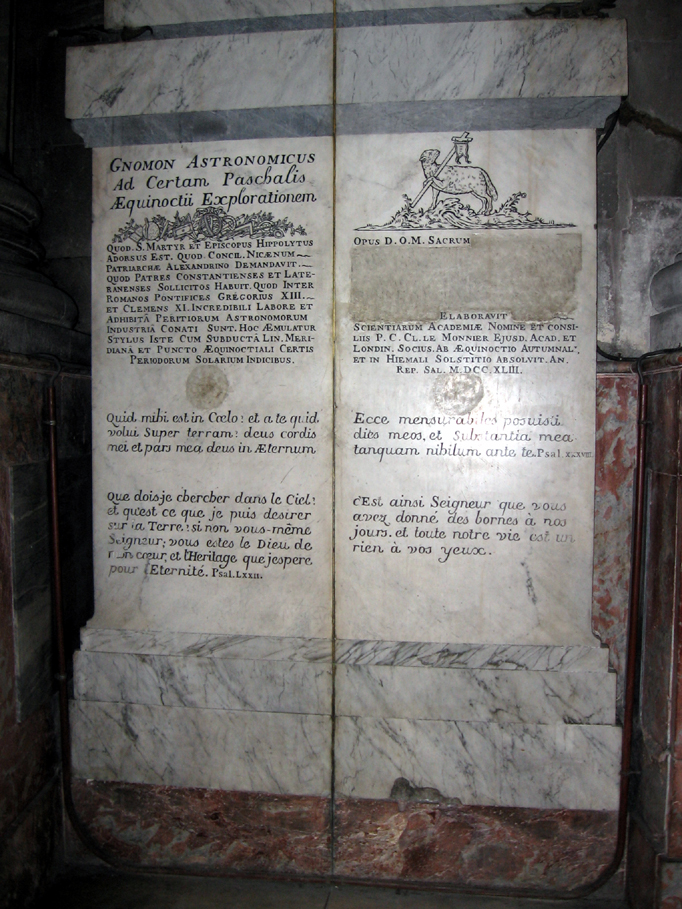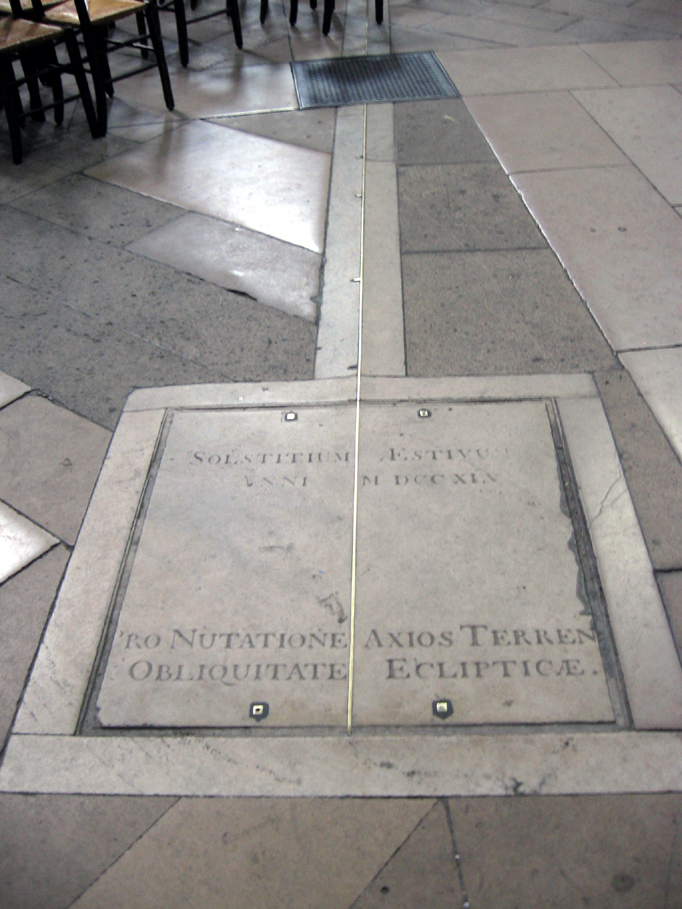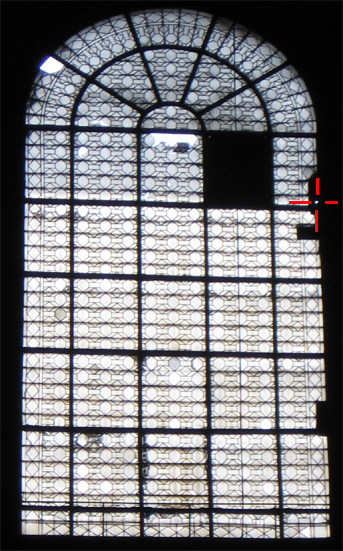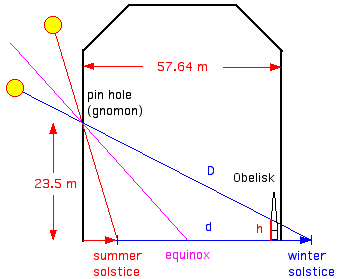Saint-Sulpice in Paris
 |
The coordinates
of the church Satint-Sulpice are: 48.851° N 2.335° E |
  |
Height of the pin hole gnomon: |
 |
The year is
2011. |
 |
Use the keys "y", "m",
or "d" to increase the year, month, or day, or shift key and "y", "m", or "d" to decrease the year, month, or day. |
  |
Use the command key and
"u" or "d" to move up or down. Use "Reset" from the Details menu to reset the position and zoom. |
 |
Select "Write Data" or "Write Table" from the Details menu to open data windows. |
|
2011, June
15:
transit: 13:51 CEST, altitude 64.46° photo: 13:35 CEST, altitude 64.26°, azimuth 171.5° 1743, June 15: transit: 13:50:26 CEST, altitude 64.49° 1743, June 22: transit: 13:51:56 CEST, altitude 64.63° x=11.144 m (H=23.5 m) 23.47421° 1743, Dec 22: transit: 13:49:41 CEST, altitude 17.72° x=73.547 m (H=23.5 m) 23.47421° h = 5.08 2011, June 21: transit: 13:52:22 CEST, altitude 64.59° x=11.164 m (h=23.5 m) 23.43738° The present church Saint-Sulpice, erected over a church of the 13th century, was founded in 1646 and mostly completed in 1732. It is second largest church in Paris after Notre-Dame de Paris.   The sun shines through a small hole in the southern wall to cast its light on the meridian line each day (aperture gnomon).  The aperture gnomon.  The mean transit time (solar noon) is 11:51 UT, which varies according to the equation of time from around 11:34 UT to 12:05 UT. The distance d of the disk of light along the meridian line and the size (horizontal and vertical) are increasing from summer solstice to winter solstice, whereas the time t to cross the meridian line remains nearly constant. The diameter S of the
disk of light is mainly determined by the apparent
diameter α of the Sun:
S = D·tan α
The
duration t (in seconds) of the meridian transit
depends on the Sun's diameter α (arc
seconds) and the declination δ:
 The diameter a of the aperture and an amount due to diffraction (2·D·1.22·λ/a ≈4 mm) has to be added to S.
The diameter of the aperture is supposed to be 6.6 mm The image is
of greatest sharpness if the distance D from the
aperture (diameter a) to the surface is given) by
(wavelength λ):
 D = 19.8 m (for a=6.6 mm, λ=550 nm) In the past centuries
the obliquity of the ecliptic decreased by 0.013° =
46.8'' per century. The result is a shift of the sun
spot on the meridian line:
|
|
|
|
Église Saint-Sulpice, Paris (Wikipedia) Gnomon of
Saint-Sulpice (Wikipedia) Pierre Charles Le Monnier (Wikipedia) |
| Books |
| Michel Rougé:
Le gnomon de l'église
Saint-Sulpice, Paroisse
Saint-Sulpice, Paris 2006. Saint-Sulpice, Paroisse Saint-Sulpice, Paris 2003. J. L. Heilbron: The Sun in the Cathedral, Cathedrals as Solar Observatories, Harvard University Press, 1999. |

Updated: 2023, Oct 06

